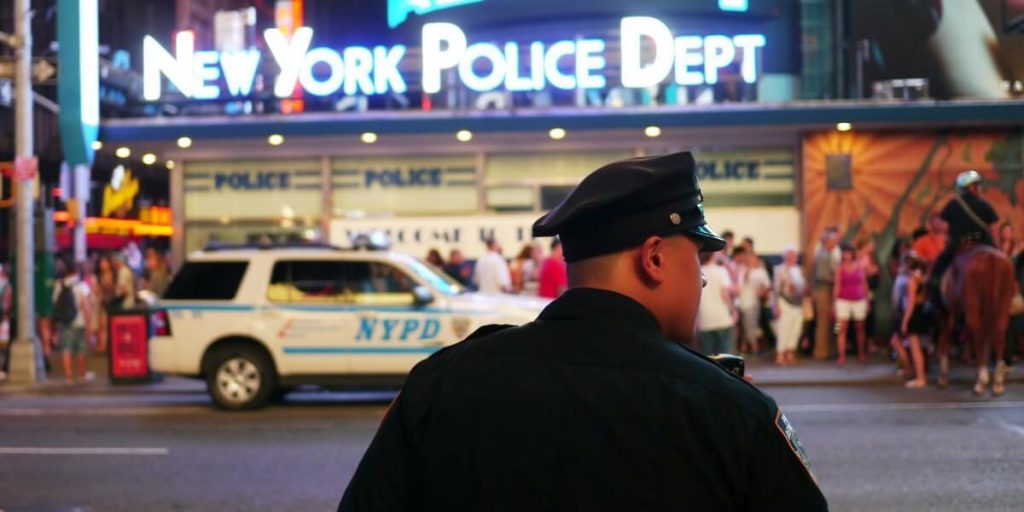The New York City Council today voted in favor of the Public Oversight of Surveillance Technology (POST) Act, a bill that requires the New York City Police Department (NYPD) to disclose their use of surveillance technologies. The POST Act also mandates that the NYPD develop policies on how it deploys those tools, as well as establish oversight of the department’s surveillance programs to ensure they remain compliant.
The passage of the POST Act, a three-year-old piece of legislation written with input from local activist organization Surveillance Technology Oversight Project (STOP), comes as cities around the country reexamine law enforcement policies following widespread demonstrations against abuse. Residents and activists on Tuesday urged the Detroit City Council to reject a contract that would extend the city police’s use of facial recognition technology. On Wednesday, racial justice and civil liberties groups called on members of the U.S. Congress to end funding for surveillance technology law enforcement is using to spy on demonstrators.
Under the POST Act, the NYPD’s surveillance policy must include descriptions of capabilities, rules, processes, guidelines, safeguards, and security measures designed to protect information collected by drones, license plate readers, cameras, cell-site simulators, and other monitoring devices. The Office of the NYPD Inspector General will be responsible for auditing the policy each year.
“Residents are demanding more from law enforcement and their elected officials to protect the civil rights of all New Yorkers, specifically Black and Brown communities, and I believe this bill is a step in the right direction toward ensuring accountability,” City Council member Vanessa L. Gibson, a cosponsor of the POST Act, said in a statement.
AND WE ARE VETO-PROOF!
This isn’t just our victory – we had amazing allies in the @BrennanCenter, @ACLU, @es_indivisible, @LegalAidNYC, @NationalAction, @NLGNYC, @NYCLU – and this victory is for all New Yorkers.
— S.T.O.P.—Surveillance Technology Oversight Project (@STOPSpyingNY) June 18, 2020
Following the September 11 attacks, the NYPD developed a multimillion-dollar surveillance infrastructure — Domain Awareness System (DAS) — that generates collections of data including billions of license plate readings and weeks of security footage from over 18,000 cameras. Consisting of an interconnected web of CCTV cameras, license plate readers, physical sensors, AI-powered software, analytics dashboards, and mobile apps, DAS is employed in the police department’s day-to-day operations, from counterterrorism investigations to resolving domestic violence complaints.
The NYPD’s use of DAS is not restricted to suspected criminals or terrorists, and the collected data is retained for upwards of years. And while DAS itself doesn’t incorporate facial recognition, images stored within DAS’ database are subject to facial recognition searches.
The NYPD’s facial recognition program dates back to 2011 with the formation of a unit known as the facial identification section (FIS). Drawing on the DAS database, FIS uses photo-editing tools to generate images of faces partially covered or turned away from cameras in order to find potential matches. Officials have been recorded passing celebrity look-alikes through the database, which the software can’t accurately process. More problematically, the juvenile database integrated with the software reportedly contains images that are years out of date, and studies on similar systems show people with darker skin, women, and young children are routinely misidentified.
Beyond DAS and facial recognition, the NYPD has engaged in various forms of technological surveillance over the past few decades, including cellphone strategies like Stingray phone trackers and cell tower dumps. (Stingrays mimic a wireless cell tower to force all nearby phones and other cellular data devices to connect to it.) The department has reportedly piloted military-grade X-ray vans containing equipment for detecting explosives, and it uses drones that retain footage for a minimum of 30 days to observe pedestrian and vehicle congestion, shootings, “large scale events,” public safety situations, and emergencies.
After three long years of organizing with a coalition led by @STOPSpyingNY of the Electronic Frontier Alliance—and bolstered by the calls for justice of so many in the streets—the NY City Council has passed the POST Act, promising overdue transparency for NYPD Surveillance.
— EFF (@EFF) June 18, 2020
NYC Mayor Bill de Blasio, who’s expected to sign the POST Act into law, yesterday announced the creation of a database that will track the roughly 1,100 cases involving allegations of police abuse. He said in the coming weeks the city will begin to publish trial decisions and make all disciplinary records accessible online. Moreover, he said he would require the NYPD to release body camera footage and audio within 30 days in cases where an officer has fired a weapon, caused death, or inflicted substantial bodily harm.
“The POST Act is a crucial check on NYPD surveillance on New Yorkers of color and Muslim communities,” STOP founder Albert Fox Cahn said in a statement this week. “For far too long, the NYPD has used federal and private grants to spy on us.”
As CNBC notes, New York City is the 14th city to adopt a surveillance policing transparency law, joining San Francisco, Palo Alto, Oakland, Yellow Springs, Ohio, Nashville, and three metropolitan areas in Massachusetts. More than a dozen cities are working on similar legislation, according to the American Civil Liberties Union, which began spearheading many of the efforts in 2016.
